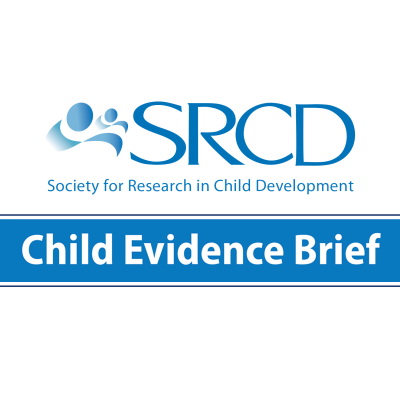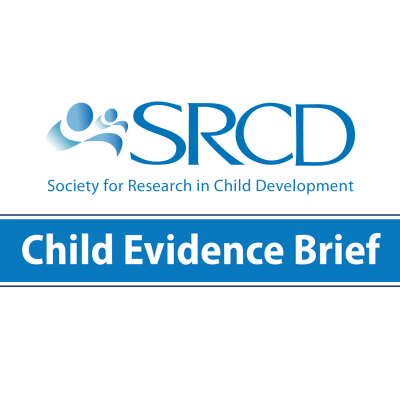How Health-Care Policies Affect Children's Health and Development
Social Policy Report Brief, Volume 29, Issue 4
Why Does This Matter?
Most U.S. children (94%) have some form of health insurance coverage. While this is the highest rate in U.S. history, poor children still lag behind middle-income children. Serious infectious diseases (e.g., measles, diphtheria, meningitis) and severe malnutrition have declined or disappeared, and new treatments have improved life expectancy among children with conditions like leukemia, complex congenital heart disease, and cystic fibrosis. However, the prevalence among children of obesity, asthma, mental health conditions, and neurodevelopmental conditions has skyrocketed. Many children with rare or complex health conditions still lack access to the specialty care they need
Significant challenges to the health of U.S. children remain, even in the context of noteworthy increases in health insurance coverage, declines in the rates of infectious disease, and improved treatments for serious health conditions.
Background
- Children in the United States are now substantially more racially and ethnically diverse than other age groups. Children also have much higher rates of poverty than any other age group and poverty affects all aspects of children’s health. Although in general, children are healthier than other age groups, they experience much chronic illness.
- Medicaid is the major public insurance program for low-income children. As a joint federal-state program, payment levels and services covered by Medicaid vary considerably across states.
- Additional coverage comes from states through the Children’s Health Insurance Program (CHIP). Unlike Medicaid, which is an entitlement, CHIP is a block grant, so enrollment of new children can be discontinued when states run out of funding.
- The implementation of the Affordable Care Act has helped insure additional children either because they are directly eligible or because once parents are insured, they seek ways to insure their children.
- Insurance coverage does not guarantee access to services. For example, many dentists and pediatricians don’t accept Medicaid. Parents face increasing out-of-pocket costs for numerous health care expenses, from routine visits to specialty care.
- The 3.5 million children with rare diseases face limitations in care because pediatric subspecialists are few in number and may be located in specialized hospitals far from the patients.
What the Research Says
- Having health insurance increases access to and use of preventative services, especially routine checkups, and results in improved health, including dental health
- Medicaid access for children is associated with better grades, fewer missed days, better graduation rates, and higher long-term earnings in adulthood.
- Yet the circumstances into which a child is born have stronger relationships to health and development than health care services, limiting the effectiveness of health care to improve children’s health. For example, poverty affects all aspects of child health and development. Decreasing poverty will improve health status and response to medical treatments as much as or more than improving personal health care services for children.
- Recognizing the importance of social context, improving child health requires integrative approaches that link health care providers with schools, community services that focus on issues like homelessness and unemployment, and support for family functioning.
- Rates of mental health diagnoses have grown rapidly among U.S. children and youth. Mental health conditions can complicate other health conditions, and children with chronic health conditions have higher rates of mental or behavioral health concerns.
- Children with behavioral and emotional symptoms face a fragmented system. Federal policy often separates physical and behavioral health services.
Implications for Policy and Practice
- Address the issues that remain even with historically high rates of health insurance coverage for children, including gaps in coverage for low-income children, gaps in access because of pediatricians and dentists who don’t accept Medicaid, and growing out-of-pocket costs.
- Acknowledge the needs of low-income children with chronic health conditions who don’t meet the criteria for the severity of a disability required to receive cash assistance through Supplemental Security Income.
- Develop regionalized systems of care with regionalized Medicaid funding to improve access for children requiring specialized care, who may find that their coverage doesn’t travel if they seek a provider out of state or that Medicaid agencies in neighboring states pay less than in-state rates.
- Develop and implement measures of the quality of services provided in insurance systems, focusing on health and developmental outcomes for children rather than providing incentives for services to be provided.
- To address children’s health care needs, training the pediatric healthcare workforce should include preparing for work in interdisciplinary teams and implementing community health approaches. Training should focus on health promotion and prevention as well as behavioral health and family functioning.
- Foster promising approaches for integrating behavioral health into ongoing health care services, including providing pediatric practices with access to mental health practitioners and addressing mental health concerns as part of all health care visits. Facilitate collaborations among health care providers, schools, and juvenile justice settings.
This brief summarizes a longer Social Policy Report, "The Influence of Health Care Policies on Children's Health and Development," by James M. Perrin, Professor of Pediatrics at Harvard Medical School and John C. Robinson, Chair in Pediatrics at Mass General Hospital for Children; Tomas F. Boat, Professor of Pediatrics at the University of Cincinnati School of Medicine and Cincinnati Children’s Hospital Medical Center; and Kelly J. Kelleher, Professor of Pediatrics, Psychiatry, and Public Health at Ohio State University School of Medicine and School of Public Health and Nationwide Children’s Hospital. The Social Policy Report is published quarterly.


